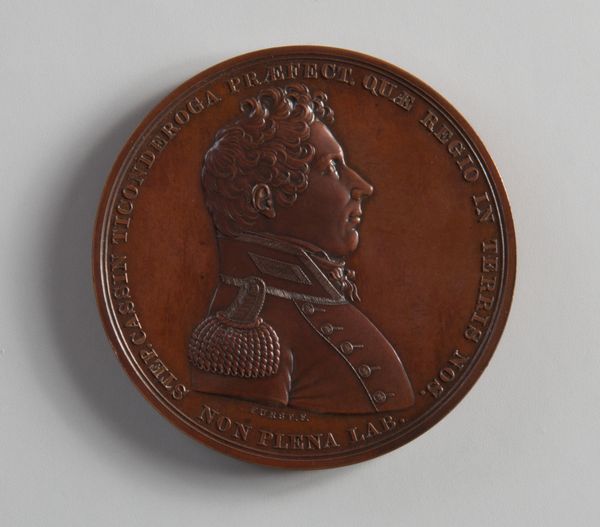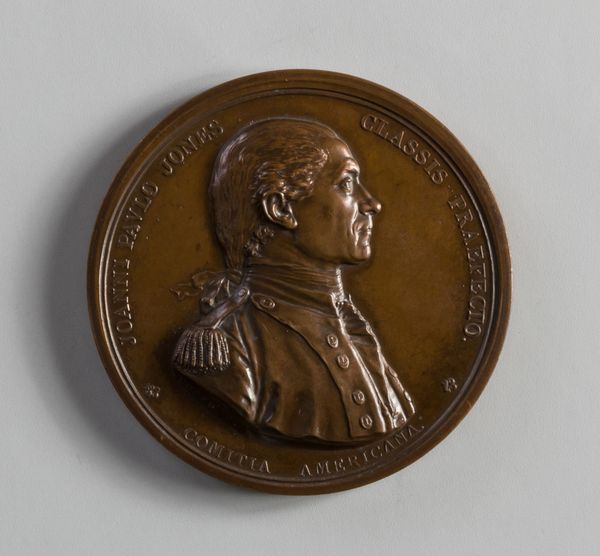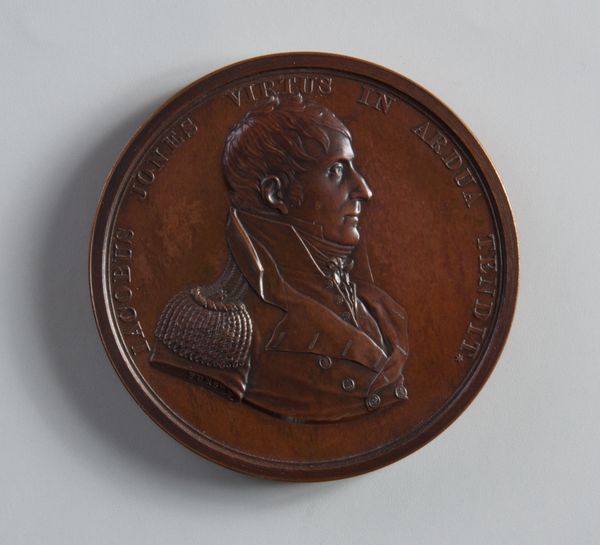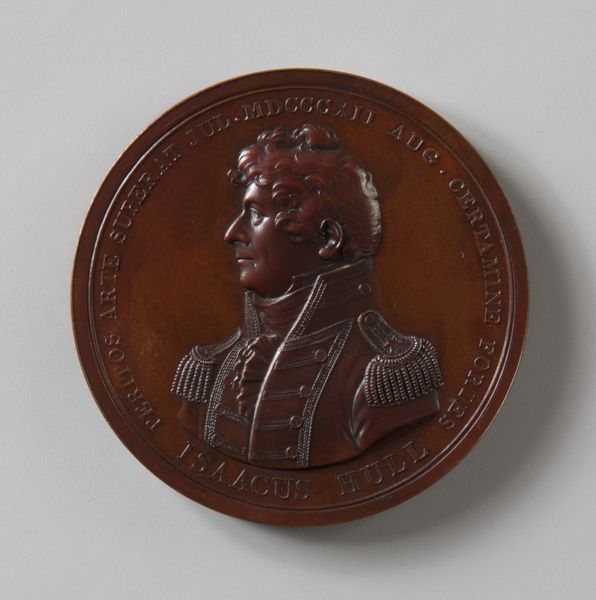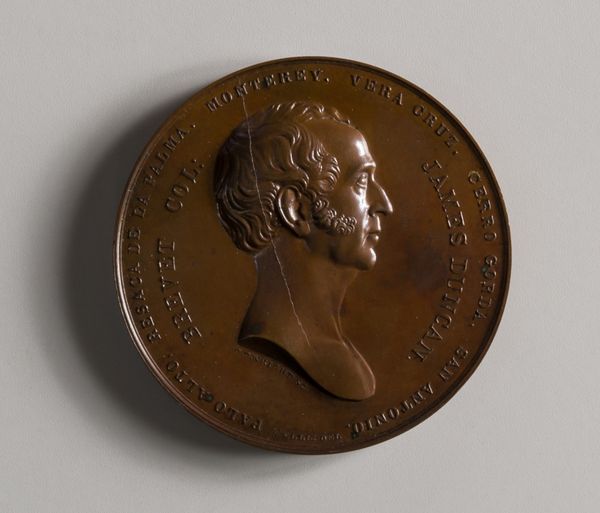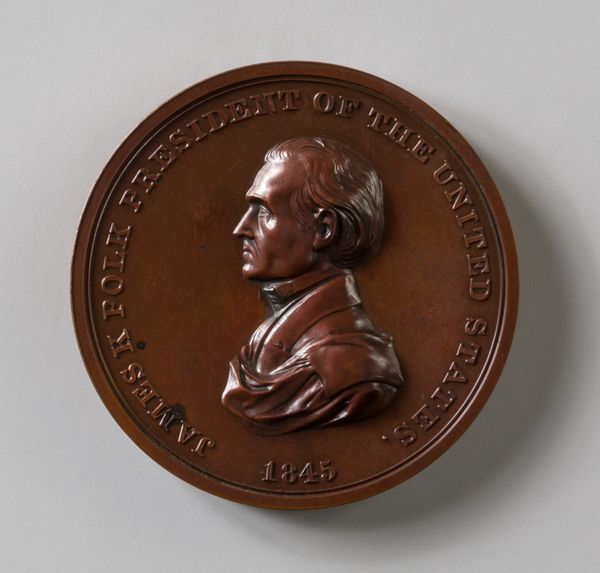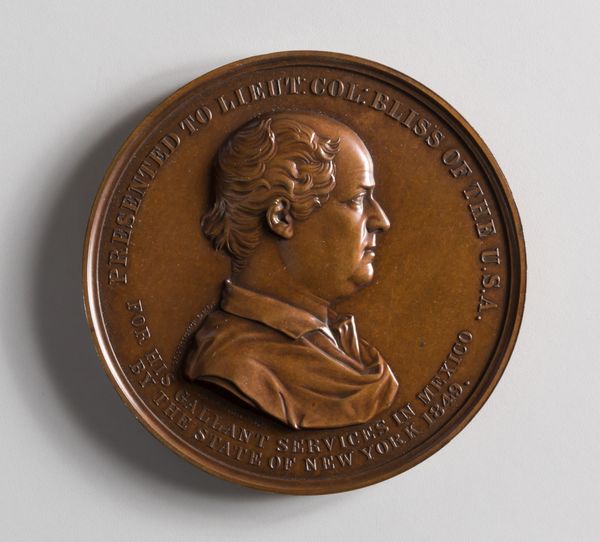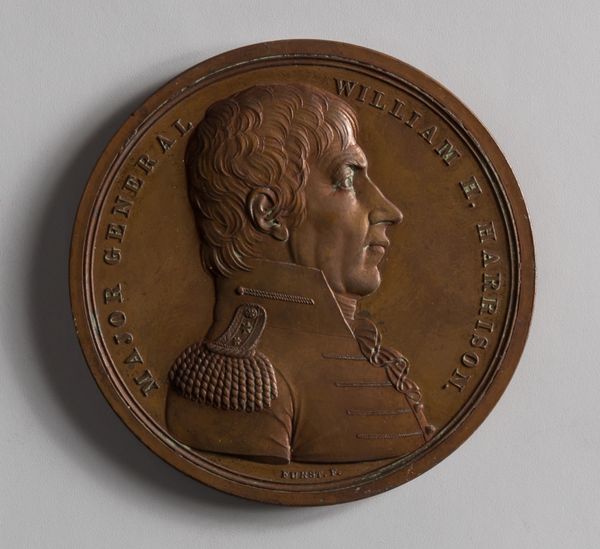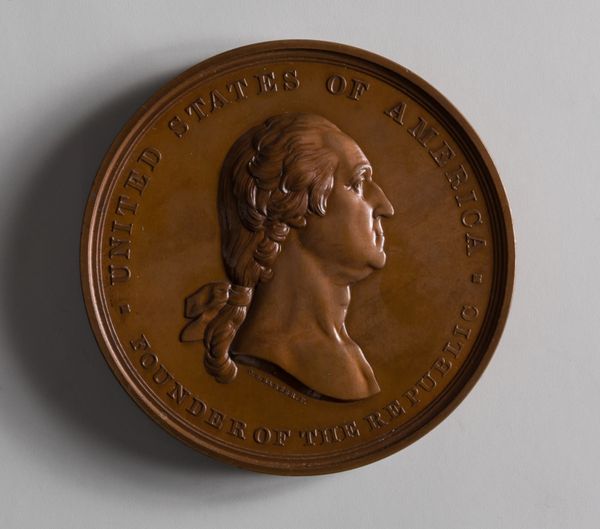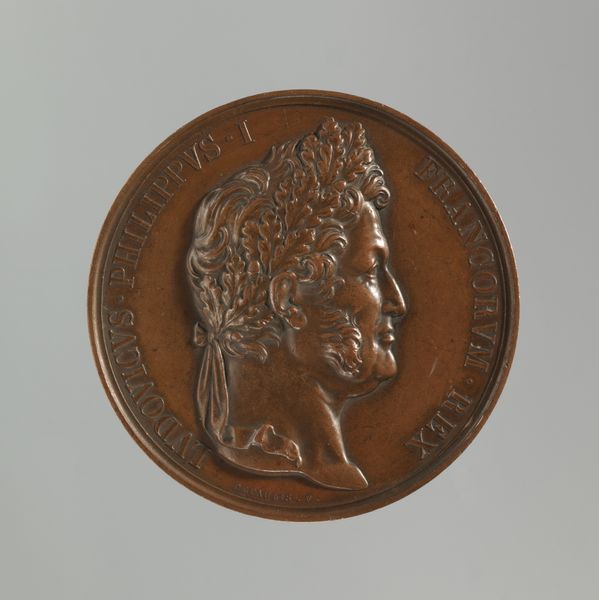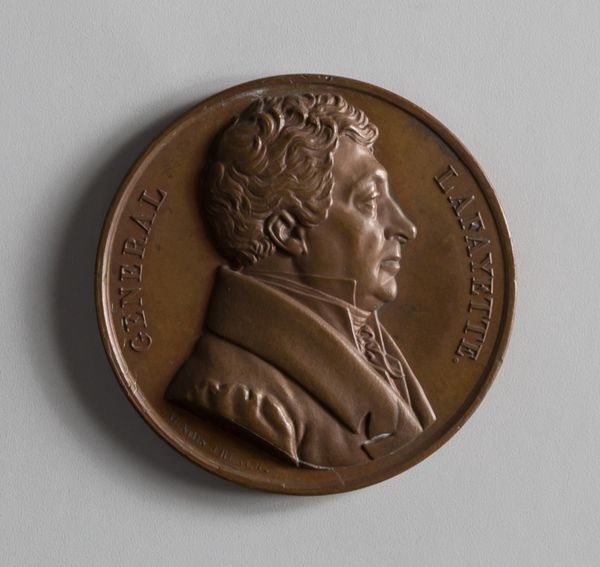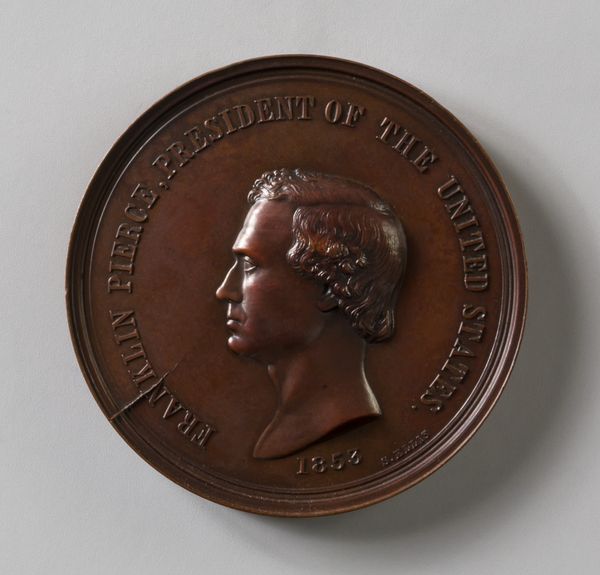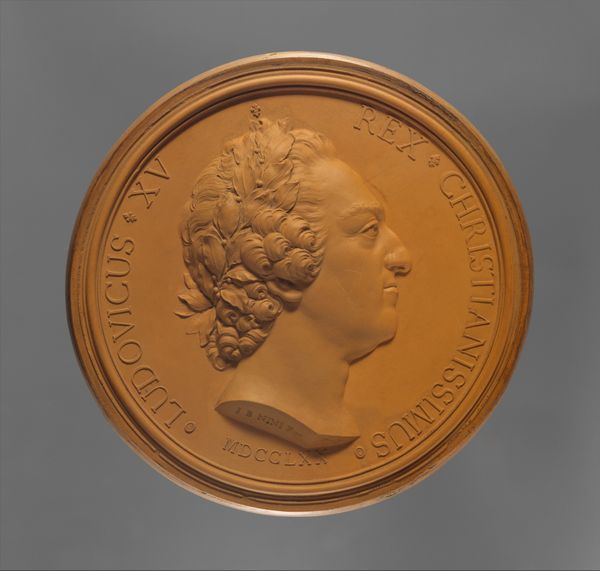
bronze, sculpture
#
portrait
#
neoclacissism
#
sculpture
#
bronze
#
sculpture
#
men
#
united-states
#
history-painting
#
profile
Dimensions: Diam. 2 9/16 in. (6.5 cm)
Copyright: Public Domain
Curator: Here we have a bronze medal created sometime between 1800 and 1830 by Moritz Fürst. It commemorates Major General Edmund P. Gaines. What strikes you first about this work? Editor: The immediate impression is one of formality, wouldn't you say? It's all so carefully rendered and classically composed; quite reserved in its emotional tone, really. Curator: Absolutely. These medals served a very particular socio-political function. This neoclassical style, popularized during the Enlightenment, draws deliberate parallels between contemporary figures and ancient heroes, thereby reinforcing the values and virtues they embody. Think gravitas and patriotism. Editor: So, a strategic deployment of visual rhetoric then. I notice the profile view particularly harkens back to ancient Roman coinage. Why was this particular likeness favored so heavily in the U.S. at this time? Curator: The profile portrait indeed evokes the Roman emperors. But look also at the man’s stern bearing, a subtle hint of a pursed lip. Gaines isn't just a soldier, but a leader, conveying steadfastness and resolve in the face of adversity. These are crucial qualities in nation-building, particularly during a period of territorial expansion and conflict. Editor: Interesting to note, though, isn't it, how selectively such imagery is applied? Whose stories get immortalized in bronze? Whose are omitted? And who controlled that narrative? It’s worth considering who the audience for such works would have been and what power dynamics were at play. Curator: A vital point, of course. Consider the broader circulation of these medals – they weren't just individual honors. They became tools for shaping public opinion, normalizing certain narratives of national identity, and, yes, excluding others. By the time it was displayed at the Metropolitan Museum of Art it acted as more than an honor for Gaines, and further shaped the grand American narrative. Editor: I think in some ways its greatest legacy lies in how such official imagery reveals not just what a culture wanted to celebrate, but perhaps what it sought to conceal. A nation’s curated memory, if you will. Curator: Indeed, this medal, beautiful in its classical restraint, becomes a focal point not only for Gaines' accomplishments, but also the values, aspirations, and elisions inherent in early American identity. It gives us much to consider.
Comments
No comments
Be the first to comment and join the conversation on the ultimate creative platform.

